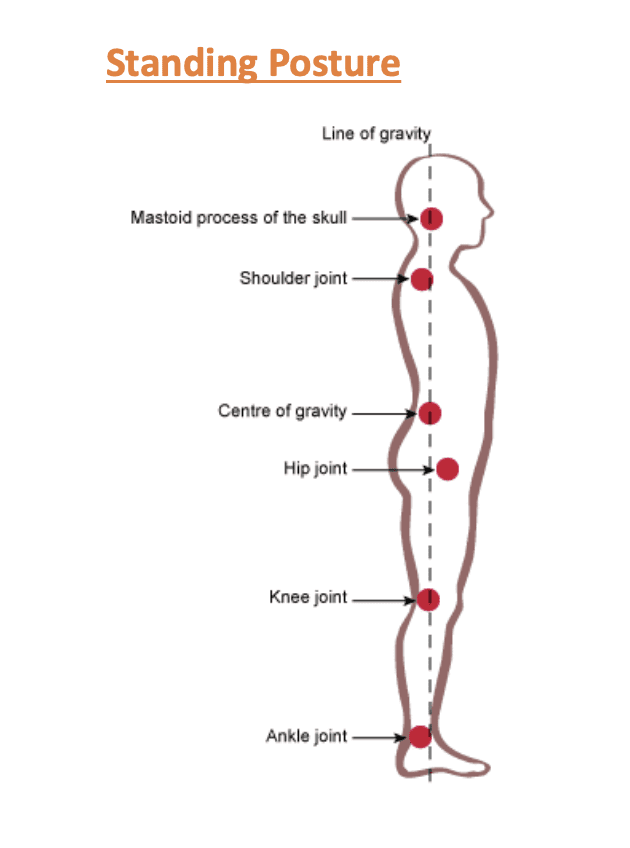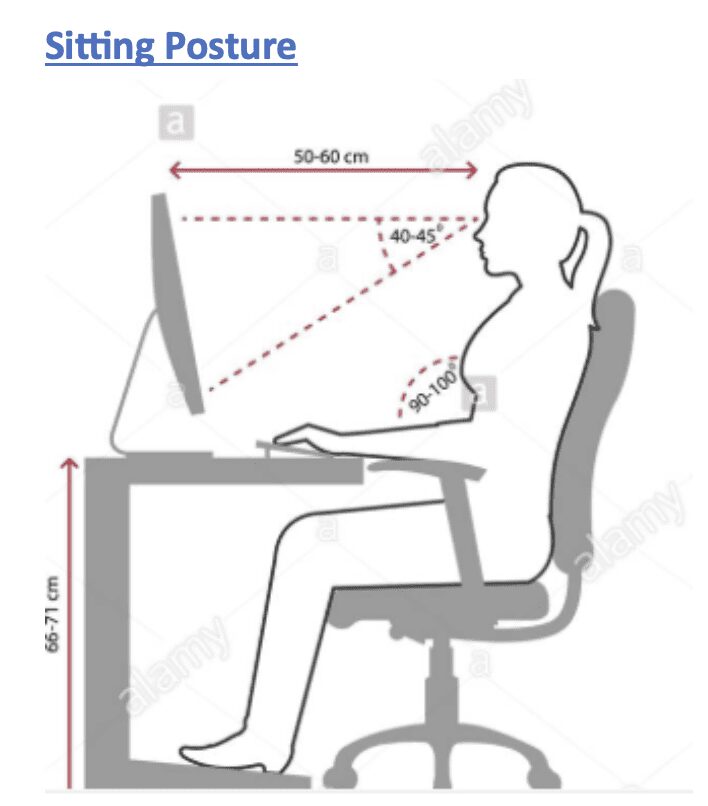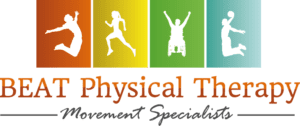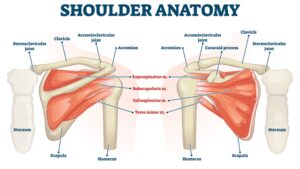
Imagine a long string hanging from the ceiling- if you are standing next to the string, the string should:
- Pass through the ear
- Just in front of the shoulder
- Just behind the hip bone (widest part of your hips)
- Just in front of your ankle joint
When sitting:
- Shoulders should be relaxed
- Hips should be at a 90 degree angle or knees slightly below the hips
- Low back should be supported
- Feet should be flat on the floor or resting on a stool
If working at a computer:
- The top of the monitor should be at eye level
- Elbows should be relaxed on arm rests in a 90 degree angle

Common disorders caused by poor posture:
- Impingement syndrome (shoulder pain)
- Shoulders that are rounded forwards as a result of slouching can cause an abnormal position of the shoulder joint, which can pinch on muscles and cause irritation with overhead movement.
- Back and neck pain
- Poor posture can change the natural curvatures in your neck and back, creating stiffness and muscle soreness.
- Jaw pain
- Forward head posture can create strain on the muscle of the neck and jaw.
- Headaches
- Strain on the head and neck muscles can cause tension headaches.
- Breathing problems and chest pain
- A slouched, rounded posture creates tightness in the chest muscles, making it difficult to expand the ribcage and lungs completely.
What can you do to correct poor posture?
- Be aware
- When sitting or standing, pretend there is a string attached to your breastbone that someone is pulling straight up towards the sky. Then with your chest up, draw your shoulders back and down.
- Change positions
- Especially important if you have a desk job. Try setting a reminder on your phone every hour to stand up and stretch or walk around. This doesn’t have to be long, just a minute break will do!
- Exercise
- Perform exercises that work your back and abdominal muscles, such as: seated rows, lat pulldowns, face pulls, bird dogs and planks. (Ask a personal trainer at your gym to show you these exercises if you are unsure how to do them).
- Stretch
- Add a few stretches and back mobility exercises to your morning routine, like cat-camel, wall angels, child’s pose and a pectoral stretch. (Again, ask a personal trainer at your gym to show you these exercises if you are unsure how to do them).
References:
https://medlineplus.gov/guidetogoodposture.html







